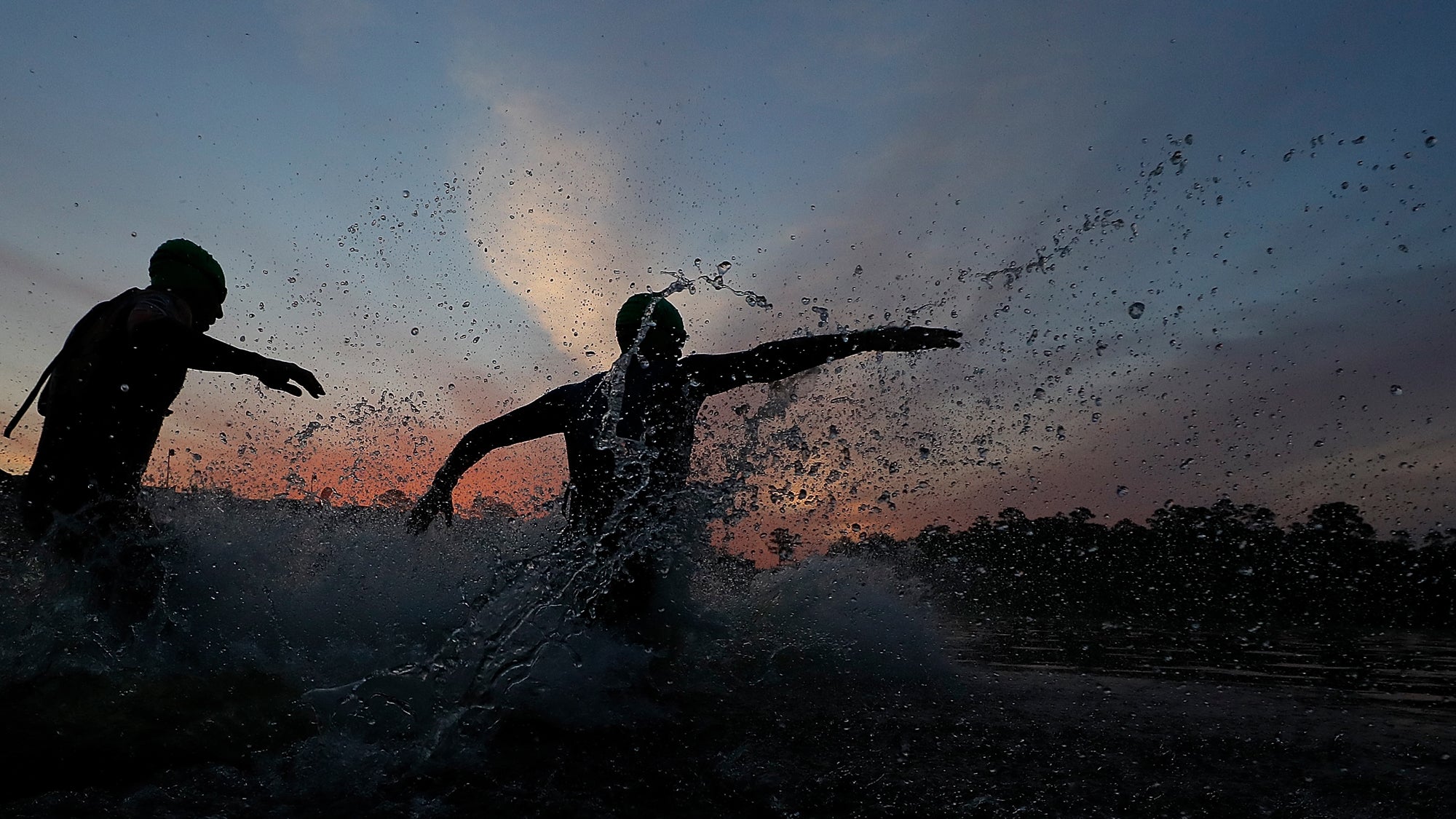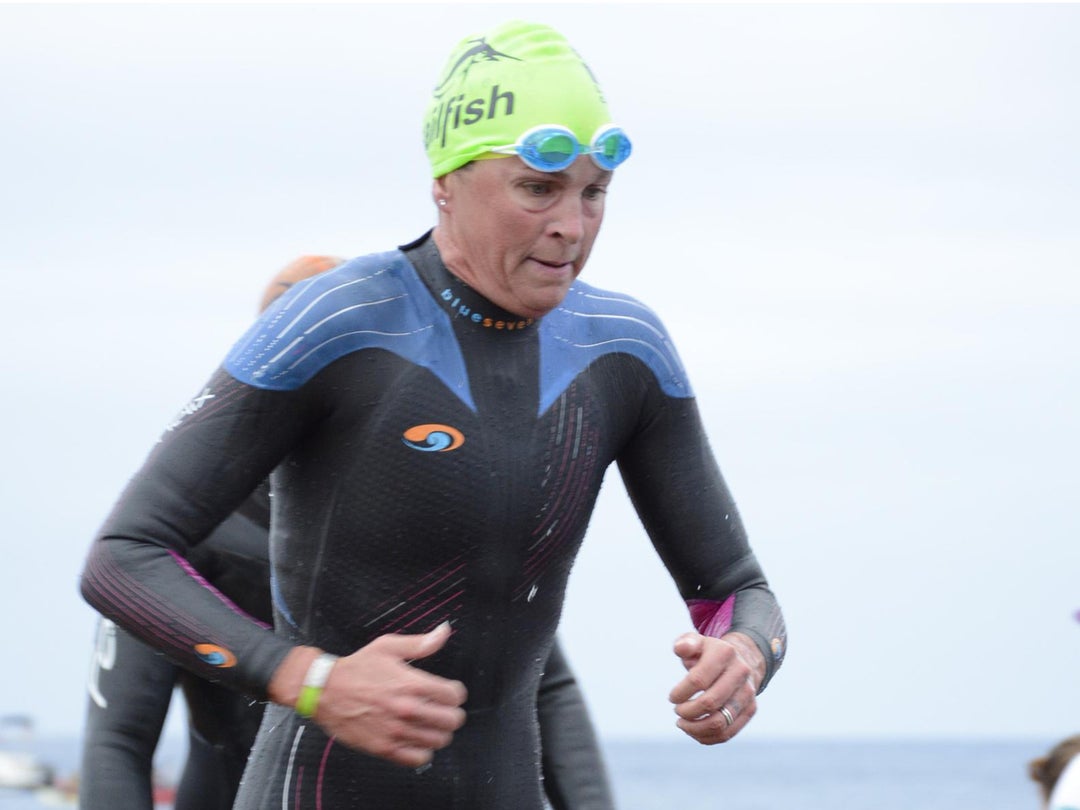Too Many Triathletes Are Getting This Part of Open-Water Swimming Wrong

Photo: Kevin C. Cox/Getty Images for Ironman
Three-time Ironman champion Dede Griesbauer is well known for her swim speed: the 48-year-old is a former NCAA All American swimmer who narrowly missed the USA Olympic swim team back in 1992 and is a front pack regular on the Ironman circuit. Griesbauer learned early in her triathlon career that swimming fast in the pool does not necessarily translate to open-water-unless you hone your open-water skills. Here she gives us a few of her secrets for success…
Improving your open-water swimming is really quite simple: It’s all about training in open-water more often and with the specificity of skills that will be required in a race situation. Specificity of training is critical to success, so the more time you can spend training in open-water, the better your triathlon swims will be.
Too often, though, I see athletes go to swim an open-water session without intent or focus. “I swam 30 minutes open-water today,” says one of my athletes. “Great,” I say, “What did you do?” Glazed looks abound and the response is something like, “Uh, I just swam.”
We would never do that in the pool: “just swim.” We show up with workouts written on pieces of paper, stuck to water bottles, or encased in ziplock bags. Each session is carefully crafted: warm-up, drills, main set, sprints, pulling, cool down. But somehow, when we arrive at the water’s edge for an open-water session most people hit “start” on their watch and off they go without purpose or intent.
To get the most out of your open-water sessions, put the same purpose to them that you do for your pool swims.
- Warm-up, then do some drills with sighting. Pick a spot to swim toward and take 100 strokes in that direction without sighting. Pick your head up and see how close to the target you came.
- Practice drafting. If you are swimming with a friend, alternate sections where the lead swimmer swims 50 strokes hard tempo, so there is effort and purpose to the session, and then you trade places.
- Take turns with your buddy jostling, or being jostled, to prepare for the unintentional, yet inevitable, physical contact that happens at the start of races.
- Practice some ins-and-outs where you run in from the water’s edge or start from waist deep water, depending on what type of start you may encounter at your next race.
Adding structure and purpose to your open-water swim sessions the same way you do to your pool sessions will yield much better results than “just swimming.”

There is one problem here, though: What if you don’t have access to open water? How do you become a better open-water swimmer if all you’ve got is a pool? The answer is much the same as we’ve outlined above: Specificity of training with the caveat of doing the best with what you’ve got.
Open-Water Swimming: Training in the Pool
If your swim training is 100 percent limited to the pool, here are some suggestions for how to develop your open-water skills without leaving the confines of the lane lines. (Editor’s note: be sure to try this week’s one-hour workout from Dede Griesbauer here.)
Practice in your wetsuit or swim skin
While wetsuit design and comfort have come a long way, you still swim differently and feel different in your wetsuit than you do in just your swimsuit, so make sure that, as your race approaches, you commit to swimming in your wetsuit or swim skin once or twice a week for a few weeks before race day.
Go long
If your typical training pool is 25 yards in length, but there is a 50-meter pool that’s accessible, pledge to get to the 50-meter pool a few times in preparation for race day. Even 50 percent fewer walls and turns will better replicate open water than your 25-yard pool will. If you don’t have access to a 50-meter pool, make one! Swim part of your main set without touching the walls: You can do a U-turn at the end of the lane, or flip and not push off the wall. Those “dead starts” at the end of each length will replicate swimming around a buoy in a race.
Skills practice
Practice all of the skills you would in an open-water venue, just do it in a pool.
- Practice sighting on odd 50s of a set of 300 repeats.
- Take turns drafting with a buddy.
- Do some push 25s with 3 or 4 across the lane to practice the physical contact of the start.
- Do a “blind man’s drill” where you push off in the middle of the lane and swim with your eyes closed to see if you can swim straight.
In short, let your imagination run wild in the pool to replicate open-water swimming as much as possible.